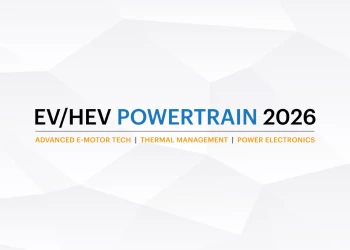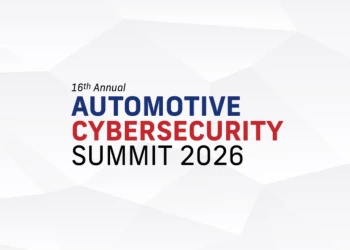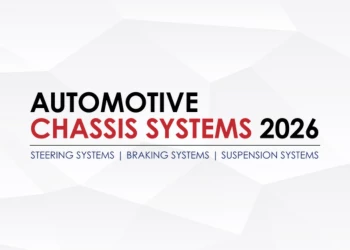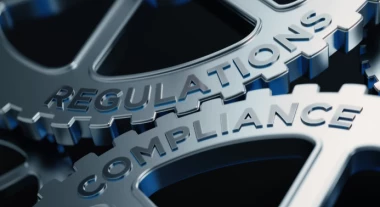Connected Vehicle Technology, Innovation, and Opportunities
The Evolution of Connected Vehicle Technology
Add bookmark
In this exclusive interview, Suman Sehra, Global VP of Automotive Product/Platform Portfolio Management at HARMAN International, shares insights on the evolution of connected vehicle technology. He discusses recent advancements, key technological challenges, the importance of consumer trust and safety, and the impact of these developments on HARMAN’s revenue streams over the next 5-10 years.
Automotive IQ: Suman, how do you view the current state of connected vehicle technology? What advancements have impressed you the most in the last 2-3 years?
Suman: The connected vehicle landscape has progressed significantly in recent years, with the rapid expansion of 5G infrastructure being a standout advancement. Many regions now have broader 5G coverage, enabling real-time communication and new connected services. Vehicles today often come equipped with 5G-capable telematics control units (TCUs), bridging the car to the outside world.
What makes 5G transformative is its support for ultra-reliable low-latency communication, enhanced mobile broadband, and massive machine-type communication capabilities. This allows for next-generation use cases like advanced driver assistance systems (ADAS) and immersive in-cabin experiences.
Additionally, regulatory clarity has improved. The U.S., for instance, has adopted Cellular Vehicle-to-Everything (C-V2X) as a communication standard for mobility use cases, giving OEMs direction for connected technology integration. This has fostered innovation, particularly in safety features and connected experiences. Collectively, these advancements are accelerating the industry’s shift toward smarter, safer, and more consumer-centric mobility.
Automotive IQ: What would you say are the biggest technological challenges still facing the development of connected vehicles?
Suman: Connected vehicle development faces key challenges, including inconsistent global network infrastructure. While 5G has expanded in many regions, others remain dependent on 4G, leading to uneven connectivity experiences. This affects vehicles’ ability to meet consumers’ expectations shaped by universally connected devices like smartphones.
Another challenge involves communication protocols. OEMs have grappled with competing standards, such as Dedicated Short-Range Communication (DSRC) and C-V2X. Only recently has C-V2X been adopted as a standard in some regions, creating new clarity but also increasing costs for re-certification across different markets.
Lastly, business models present hurdles. Many advanced use cases—such as real-time safety alerts and high-definition streaming—require low-latency, high-bandwidth connectivity. Current pricing models and limited connectivity plan options to consumers can create barriers for both OEMs and consumers.
Addressing these issues will require stronger collaboration between telecom providers, regulators, and OEMs to build a cohesive ecosystem that balances infrastructure rollout, evolving standards, and accessible business models.
Automotive IQ: How do you see emerging technologies, such as 5G and AI, impacting the evolution of connected vehicles?
Suman: Technologies like 5G and AI are transforming connected vehicles by enabling real-time insights and capabilities that weren’t possible before. Built from the ground up, 5G offers ultra-reliable low-latency communication, enhanced mobile broadband, and massive machine-type communication. These attributes allow vehicles to support safety-critical applications like Vehicle-to-Everything (V2X) communication.
For example, a vehicle approaching an intersection with limited visibility can receive real-time hazard data, enabling immediate action. This kind of responsiveness was out of reach with previous network architectures, making Vehicle-to-Network (V2N) use cases to complement and expand the capability of ADAS systems beyond line of sight.
AI further enhances these capabilities by making vehicles smarter and more adaptive. AI-driven systems analyze sensor and connectivity data to optimize both safety and convenience. Imagine digital assistants that anticipate your needs or ADAS that dynamically adjust based on real-time conditions.
Together, 5G and AI are driving new opportunities for autonomous driving, predictive maintenance, and in-cabin personalization, all while elevating the safety and reliability of connected vehicles.
Automotive IQ: What opportunities do you see in the connected vehicle market that could drive future growth for HARMAN International?
Suman: The connected vehicle market offers several opportunities for future growth at HARMAN. The shift towards software-defined vehicles (SDV) and connected services is a major driver. Consumers expect personalized, on-demand digital experiences, creating new revenue streams for OEMs through subscription services, in-car apps, and AI-powered features.
Advancements in 5G and AI further enable use cases like real-time safety features, autonomous driving support, and next-gen immersive entertainment. HARMAN’s ability to integrate these technologies across the in-cabin experience is key to maintaining leadership.
Strategic partnerships are another opportunity. Collaborating with telecom providers, regulatory bodies, and tech companies will accelerate the adoption of critical innovations such as satellite-based connectivity and network slicing.
Our “Ready” product portfolio also positions us to support OEMs by offering modular solutions that reduce time to market and address regional supply chain complexities. These opportunities allow HARMAN to lead the transformation of the automotive industry through safe, smart, and sustainable mobility.
Automotive IQ: How do you balance the push for innovation with the need for your consumers’ trust and safety in connected vehicles?
Suman: Balancing innovation with trust and safety involves a two-step approach. First, innovation must address today’s consumer pain points while aligning with regulatory frameworks. Data privacy, cybersecurity, and functional safety must be central to product development to maintain consumer trust.
Second, for emerging use cases without established regulations, we must work proactively with industry stakeholders to set new standards. Innovation without policy alignment risks undermining trust and creating fragmented solutions that hinder scalability.
At HARMAN, we prioritize consumer trust by ensuring the integrity of data used for real-time decisions, for example, it providing situational awareness to drivers. If a vehicle cannot trust incoming data, its safety and reliability is questioned thereby limiting adoption and scaling.
Ultimately, we balance pushing boundaries with building a strong foundation of trust and safety. By keeping these principles at the core of our innovations, we deliver transformative connected experiences while maintaining consumer confidence.
Automotive IQ: What impact do you anticipate the advancements of connected vehicles will have on HARMAN International’s revenue streams in the next 5-10 years?
Suman: Advancements in connected vehicle technology will drive strong growth for HARMAN over the next decade. As consumers demand immersive and personalized in-cabin experiences, vehicles will increasingly rely on high-bandwidth, low-latency connectivity for features like rich media, AI-powered assistants, and real-time safety systems.
This shift will create new revenue models through a dynamic app-based economy. OEMs can offer on-demand services, allowing consumers to customize their experiences. By enabling this ecosystem, HARMAN supports OEMs in unlocking recurring revenue streams.
Our Ready product portfolio accelerates time to market, helping OEMs navigate market pressures and supply chain complexities. This strategic approach positions HARMAN to sustain long-term business success as connectivity reshapes the automotive landscape.
























